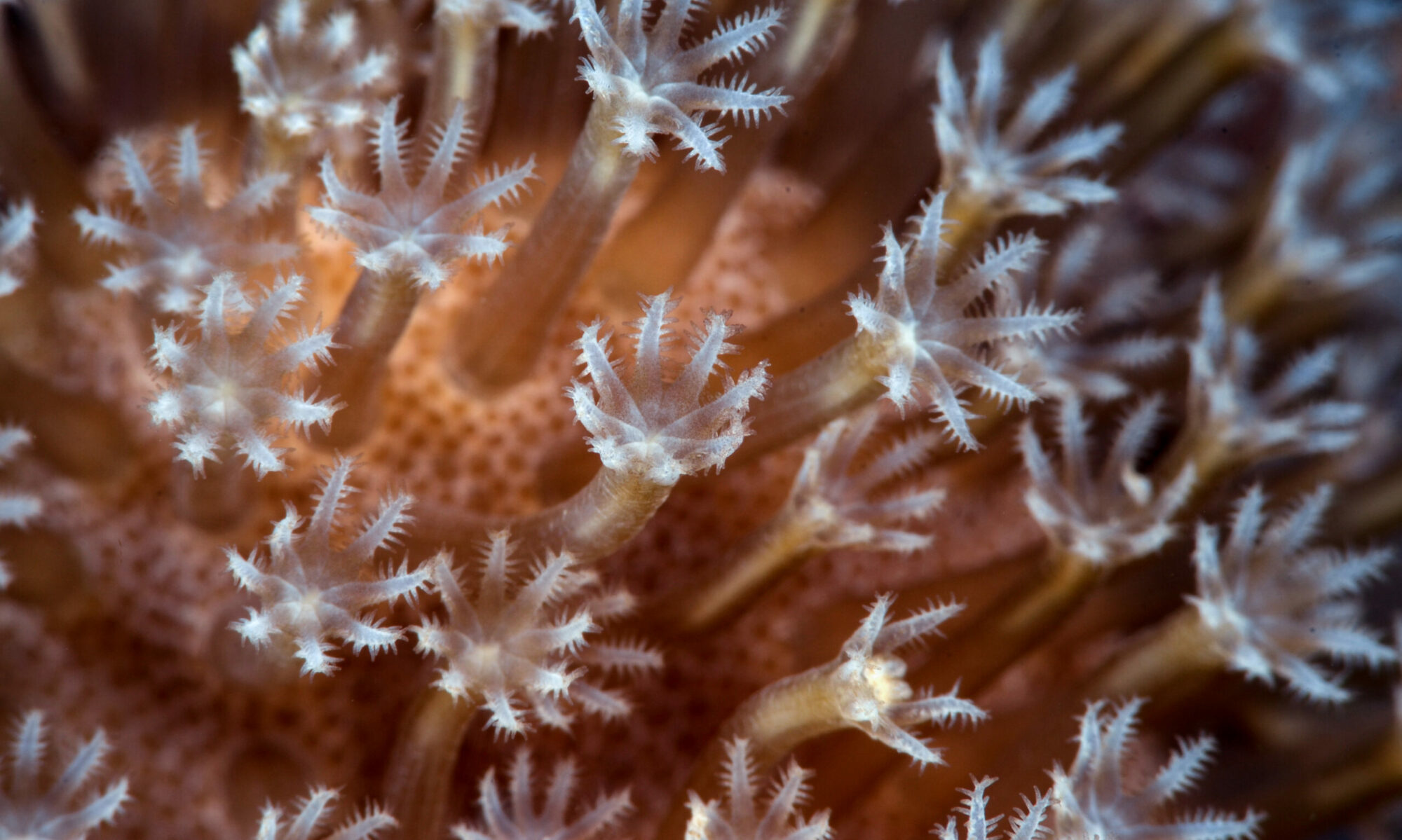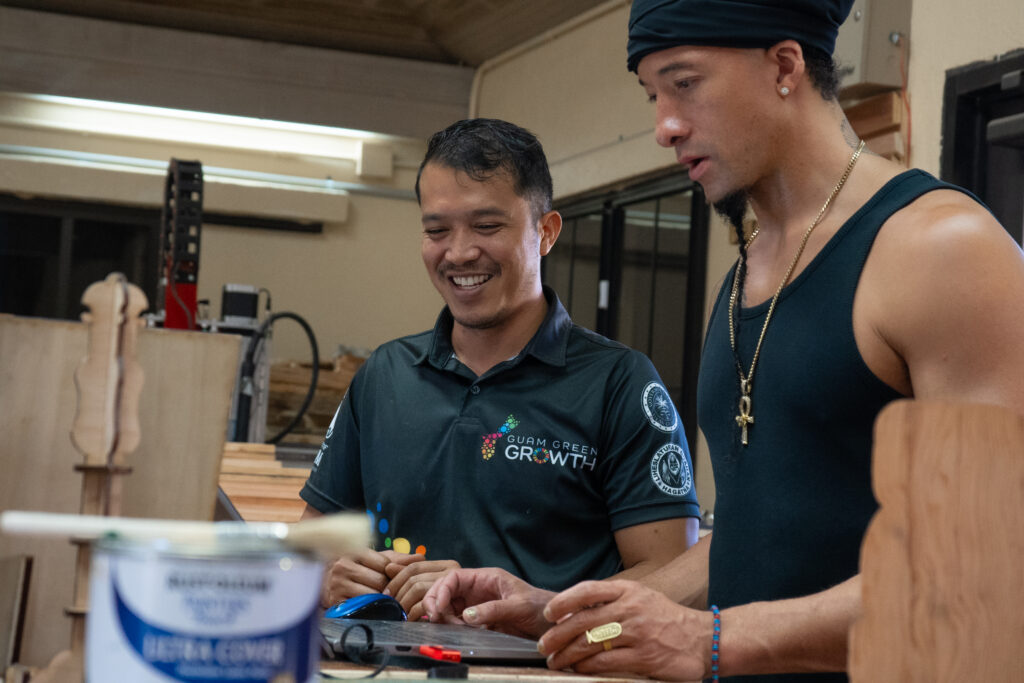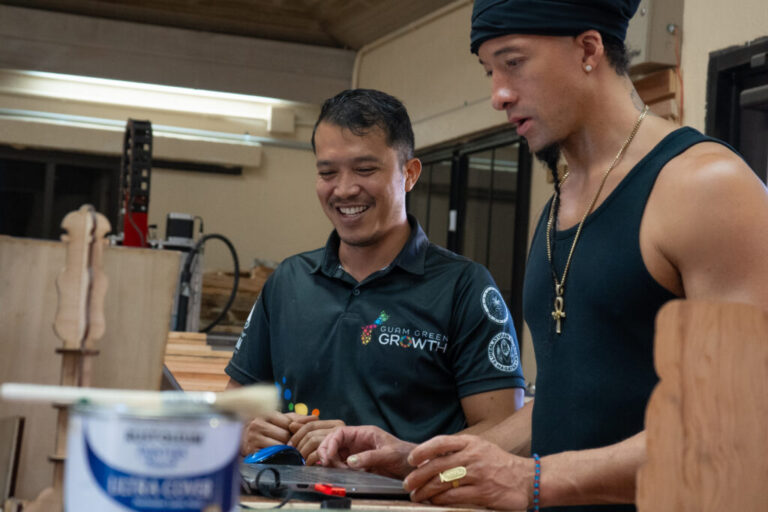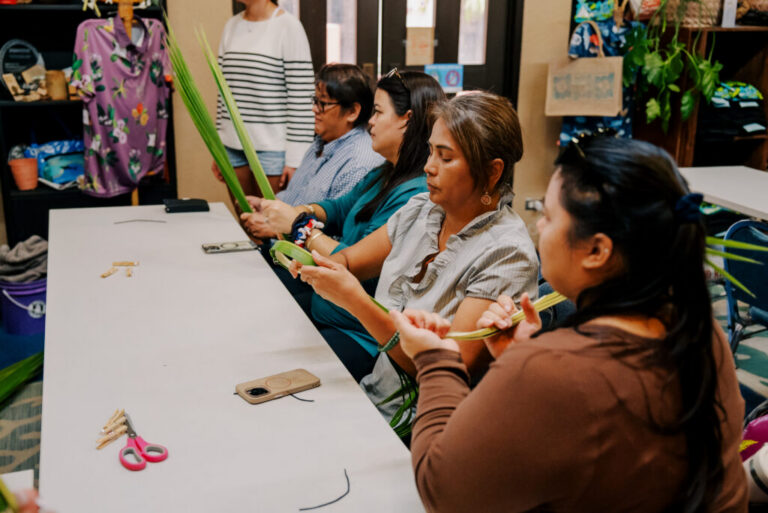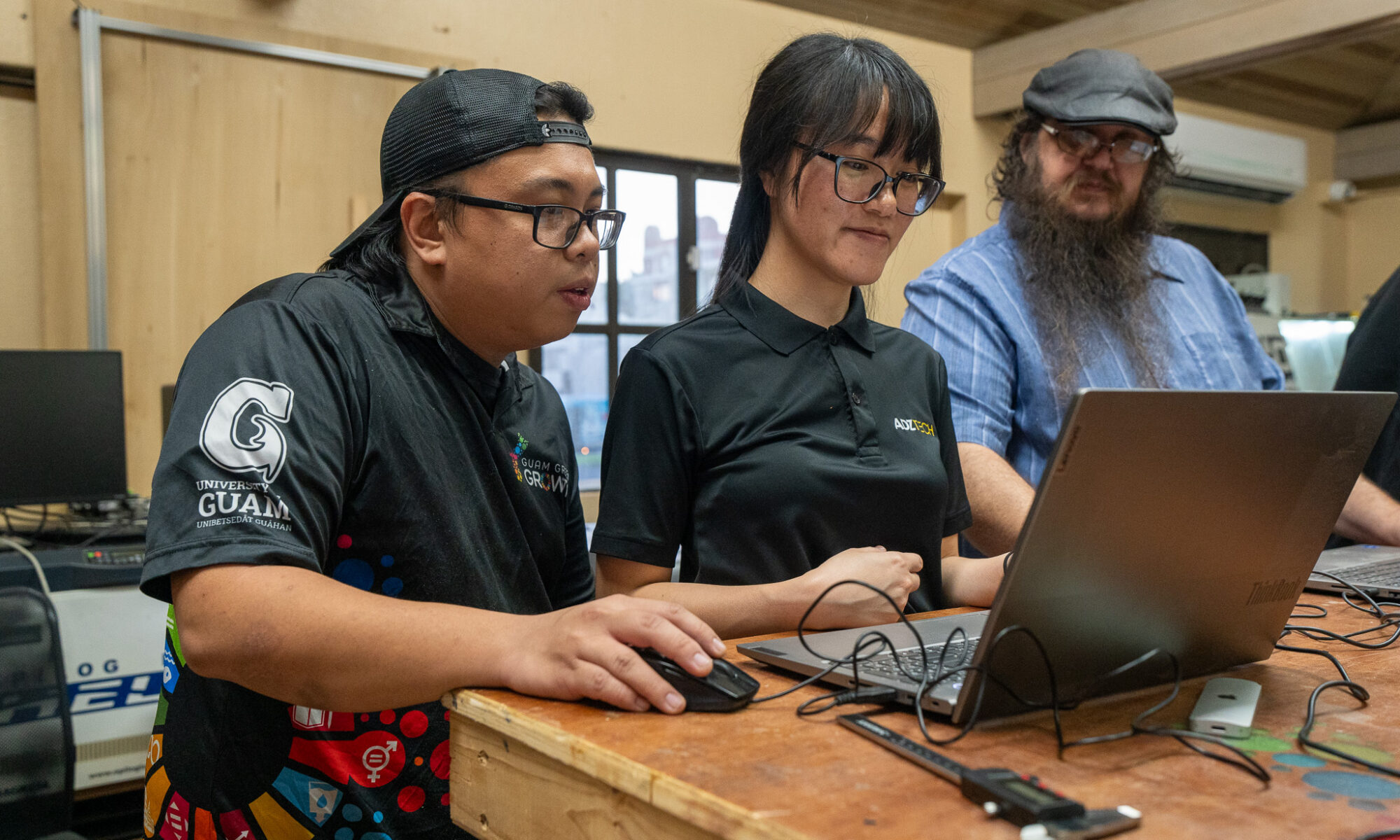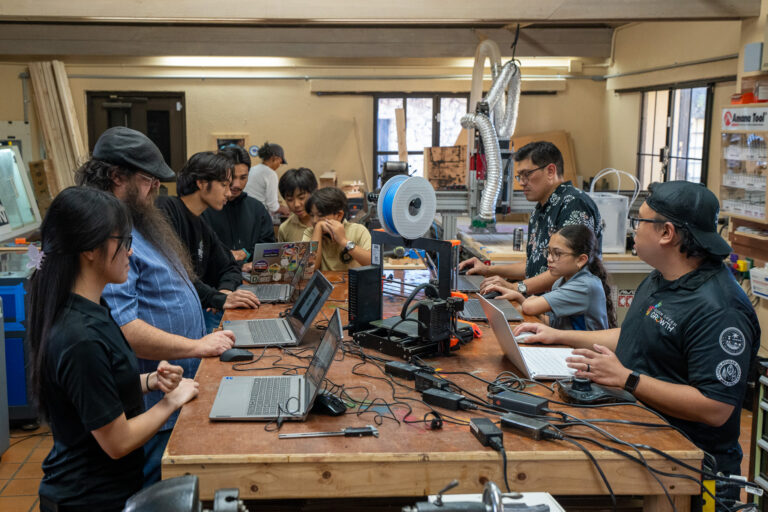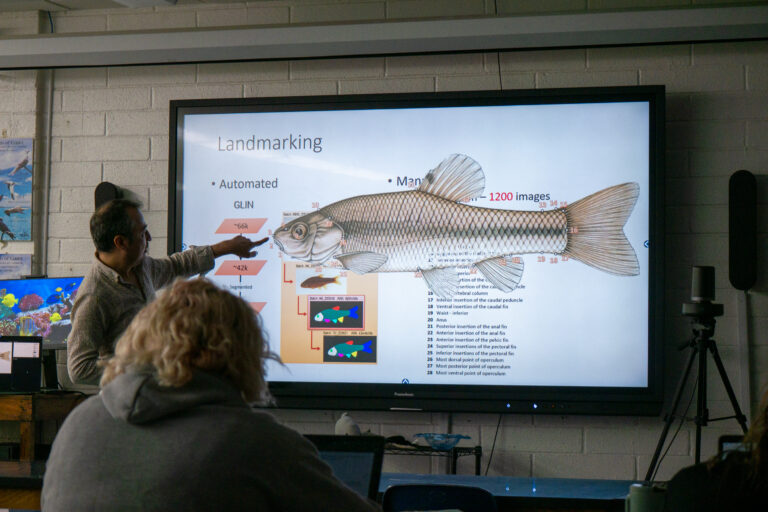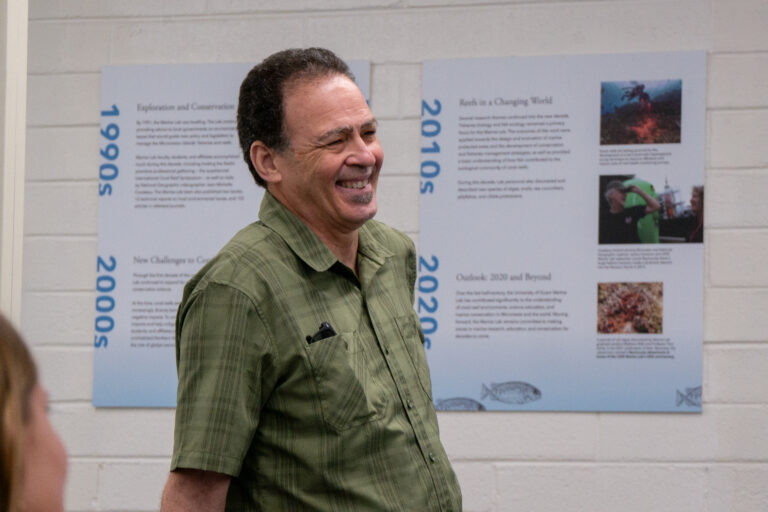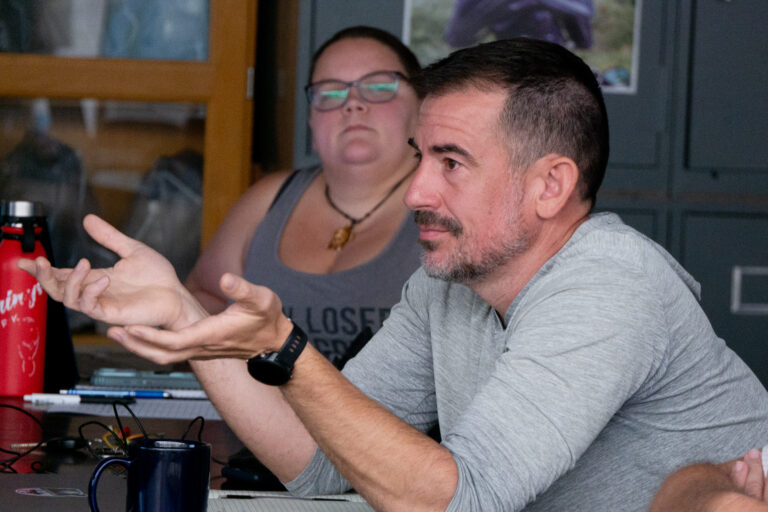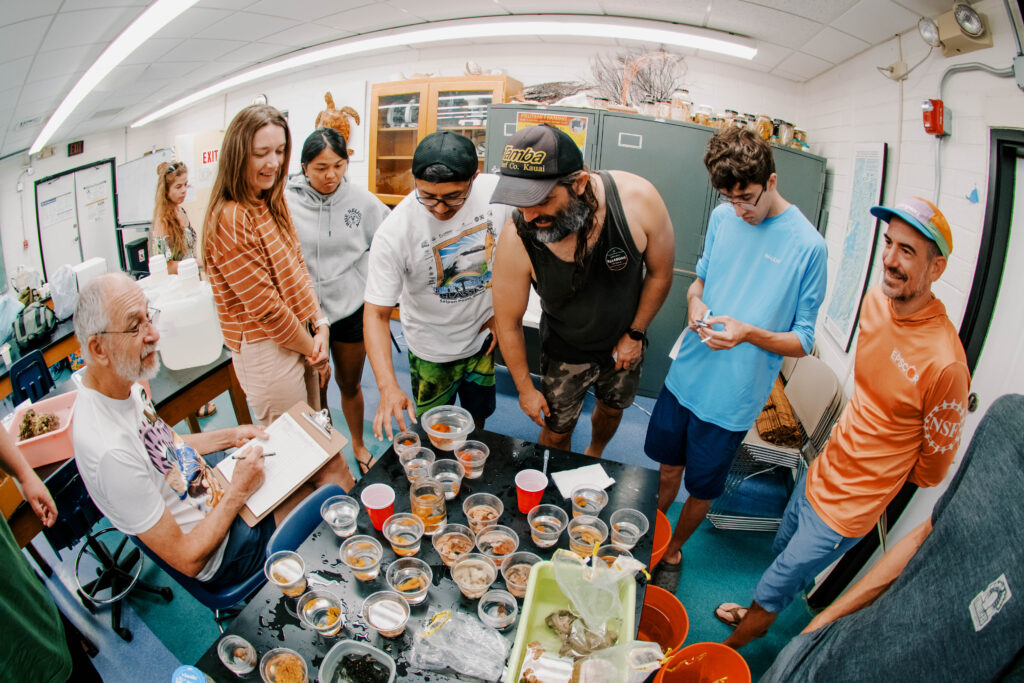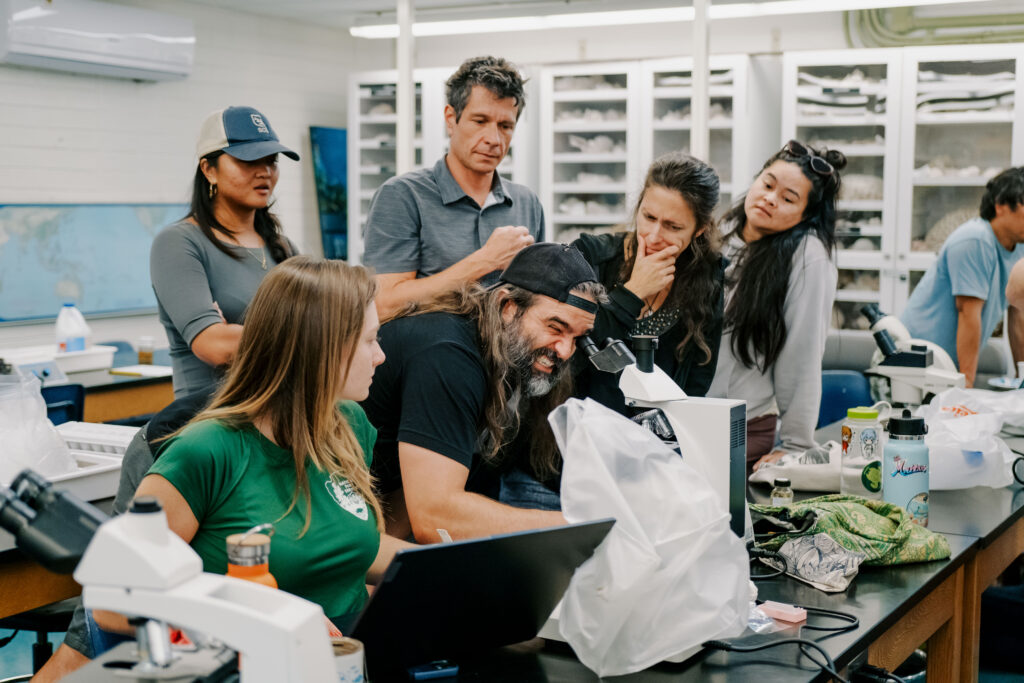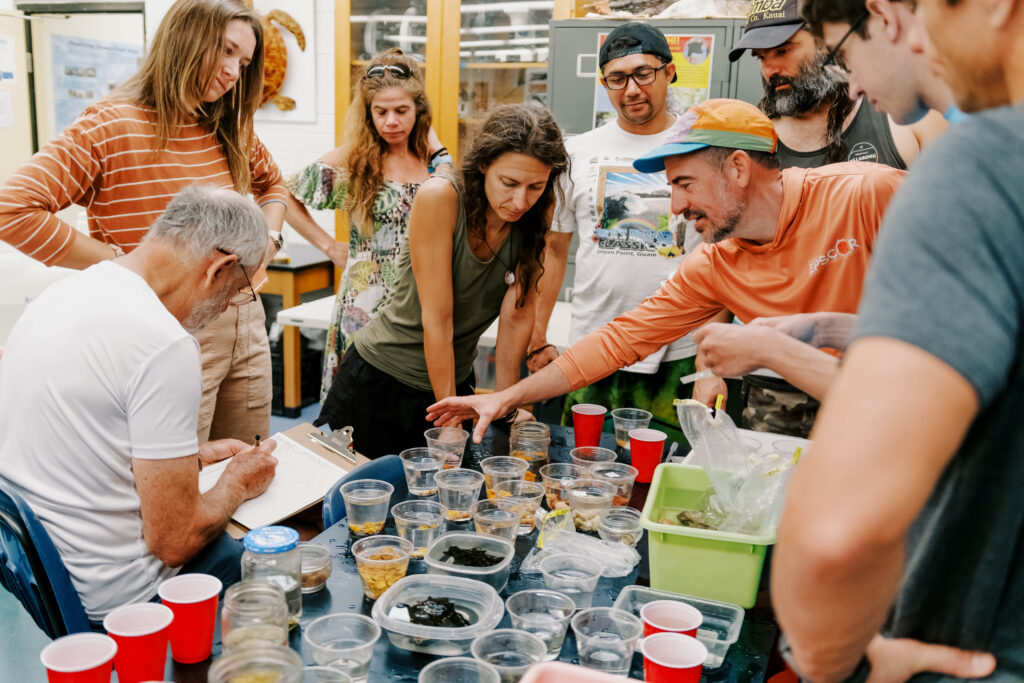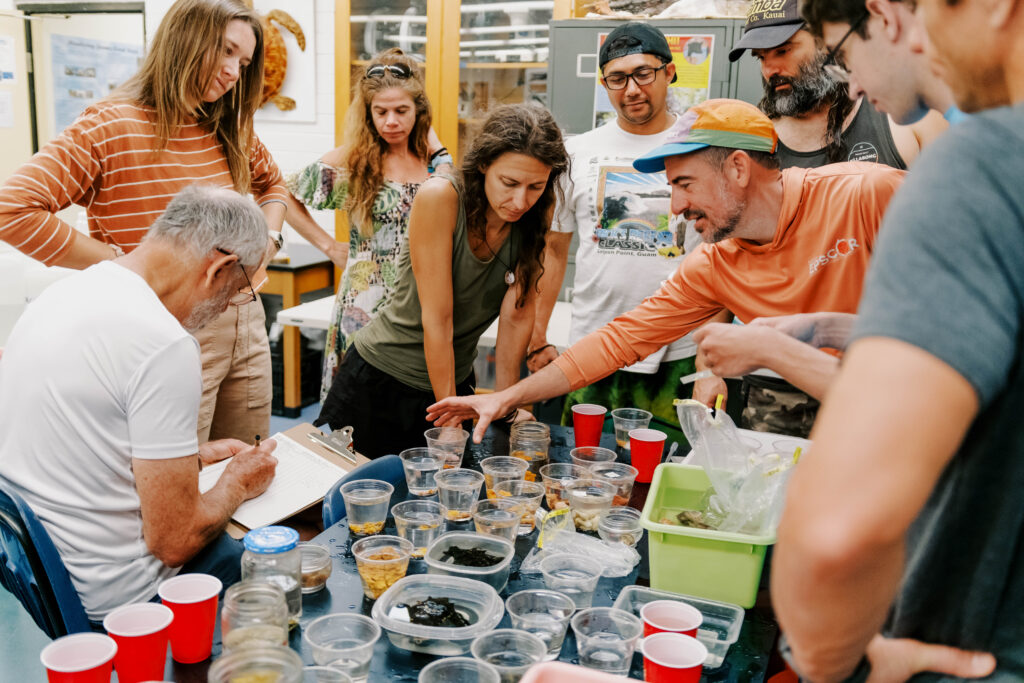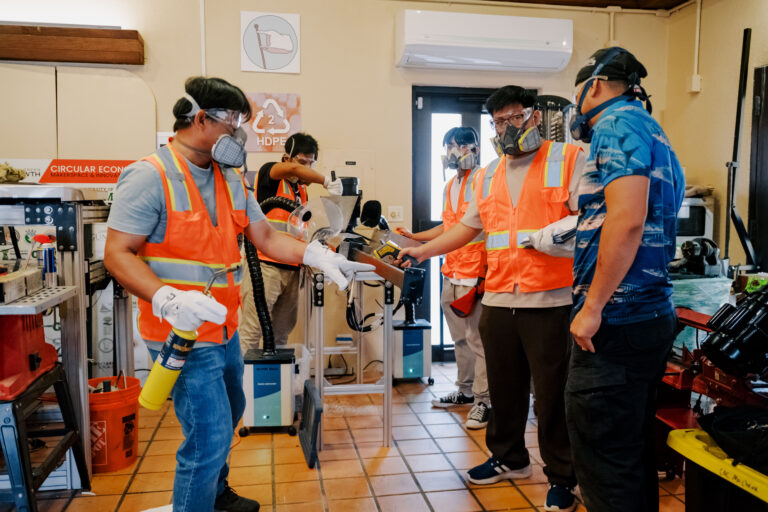


The University of Guam strengthened its presence in STEM (Science Technology Engineering & Mathematics) at the 2025 Society for Advancement of Chicanos/Hispanics and Native Americans in Science (SACNAS) National Diversity in STEM (NDiSTEM) Conference, where three UOG students earned national recognition for their research presentations.
UOG School of Engineering student Azer Bilimon received the Native American/Indigenous Student Research Abstract Award, while Archancel Abellera and Cameron San Agustin received Outstanding Research Presentation awards.
Continuing its strong participation in SACNAS, UOG sent a 28-member delegation—17 of them students—to this year’s conference including Lt. Governor Joshua Tenorio, who serves as a co-principal investigator for NSF Navigating Home and was the keynote speaker. The nation’s largest multicultural and multidisciplinary STEM event took place in Columbus, Ohio, gathering researchers and students from across the United States and its territories.
Cheryl Sangueza, Ph.D., a co-principal investigator of the NSF INCLUDES SEAS and NSF Navigating Home grants, and the head of student experience for Guam NSF EPSCoR, has led several months of preparation for students representing UOG at the conference.
“All EPSCoR and SEAS INCLUDES students who submitted an abstract were accepted to present and everyone smashed it,” exclaimed Sangueza. “SACNAS, where students present their research, network, meet phenomenal and inspiring scientists, and explore next step opportunities, is a key experience in the pathway to graduate school and for career decisions.”
Sangueza along with her capacity building team, who work across the NSF grants, UOG Center for Island Sustainability and Sea Grant (UOG CIS & Sea Grant) and Guam Green Growth coordinate with students from the high school to graduate levels across various programs designed to increase success in STEM fields.
“As a past SACNAS Chapter of the Year, the University of Guam continues to advance island-based research and scientific voices from across Micronesia,” said Austin Shelton, Ph.D., director of the UOG CIS & Sea Grant. “We are proud that three of our students earned recognition at this year’s SACNAS NDiSTEM Conference. Their work reflects UOG’s growing community of locally trained scientists who address climate and biodiversity challenges through island knowledge and innovation.”
Award Winning Presentations
Bilimon presented “Evaluating the Mechanical and Sustainable Benefits of Fibrous Reinforcement in Seawater and Freshwater Mortar Mixtures.” Under the mentorship of Ernesto J. Guades, Ph.D., Bilimon studied how adding coconut fibers affects the strength and sustainability of mortar. The project was inspired by the resource challenges that island communities such as Guam and the Marshall Islands face.
Bilimon tested different fiber types, lengths, and amounts using a standard cement-sand-water mix to measure compressive strength. His research demonstrates how reusing waste materials—such as glass and discarded coconut shells—can reduce waste and support sustainable construction. By using seawater instead of freshwater, the study also addresses water scarcity and promotes eco-friendly building materials that reflect Indigenous knowledge and environmental sustainability in Pacific Island communities.
Abellera presented “Preserving Endangered Orchids in the Marianas: Propagation Techniques for Species Recovery.” Her research focuses on conserving Dendrobium guamense, an endangered orchid found only in the Marianas. To support recovery efforts, Abellera tested two propagation methods—division and stem cuttings—to identify the most effective approach for replanting and conservation.
San Agustin presented “Exploring Propagation Techniques for Conservation of Myrtella bennigseniana, a Native Savanna Shrub.” His study examined how to improve the propagation of Myrtella bennigseniana, a native shrub that helps restore Guam’s savanna ecosystems threatened by land development and habitat loss.
Else Demeulenaere, Ph.D., associate director for natural resources at the UOG Center for Island Sustainability and Sea Grant, mentored both Abellera and San Agustin.
“The research presented by our students at the SACNAS NDiSTEM Conference speaks to their talent, hard work, and the strength of their academic preparation,” said UOG President Anita Borja Enriquez, DBA. “Their success reinforces our mission to empower students to advance science that serves island communities and inspires regional progress.”
For more than five decades, SACNAS has promoted diversity and inclusion in STEM by supporting students and professionals in pursuing advanced degrees, building careers, and contributing to their communities through science.
